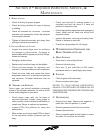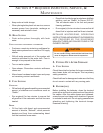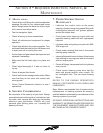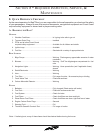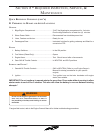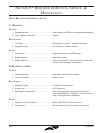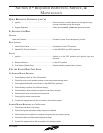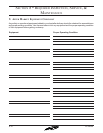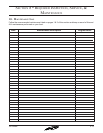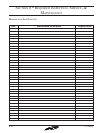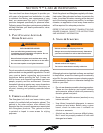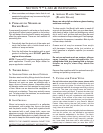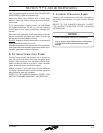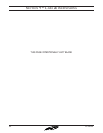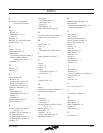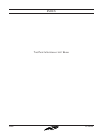
9.2
SeCtiOn 9 • Care & reFiniShing
23 Outlaw
®
R
Speed changes you.
TM.
• Minor scratches and deeper stains that do not
penetrate the gelcoat may be removed by light
sanding and bufng.
4. perManenTlY MooreD or
DockeD boaTs
If permanently moored in salt water or fresh water,
your boat will collect marine growth on its bottom.
This will detract from the boat’s beauty and greatly
affect its performance. There are two methods of
preventing this:
• Periodically haul the boat out of the water and
scrub the bottom with a bristle brush and a
solution of soap and water.
• Paint the hull below the waterline with a good
grade of antifouling paint. DO NOT paint the
engine drive surfaces.
NOTE: There are EPA regulations regarding bottom
paint application. Consult your Baja
®
dealer for
proper application methods.
5. TopsiDe areas
a. sTainless sTeel anD alloY fiTTinGs
Stainless steel and alloy ttings should be cleaned
with soap and water or household glass cleaner.
Remove rust spots as soon as possible with a
brass, silver or chrome cleaner. Irreversible pitting
will develop under rust that remains for any period
of time. Never use an abrasive like sandpaper or
steel wool on stainless. These may actually cause
rust. To help protect the stainless, we recommend
the use of a good car wax.
b. salT crYsTals
When instruments are exposed to a saltwater
environment, salt crystals may form on the bezel
and the plastic covers. These salt crystals should
be removed with a soft, damp cloth; never use
abrasives or rough, dirty cloths to wipe plastic parts.
Mild household detergents or plastic cleaners can
be used to keep the instruments bright and clean.
REFER TO THE OWNER’S MANUAL PACKET FOR
INSTRUCTIONS AND WARRANTY INFORMATION.
6. acrYlic plasTic sheeTinG
(plasTic Glass)
Never use a dry cloth or duster or glass cleaning
solutions on acrylic.
To clean acrylic, rst ood it with water to wash off
as much dirt as possible. Next, use your bare hand,
with plenty of water, to feel and dislodge any caked
dirt or mud. A soft, grit-free cloth may then be used
with a nonabrasive soap or detergent. A soft sponge,
kept clean for this purpose, is excellent. Blot dry with
a clean damp chamois.
Grease and oil may be removed from acrylic
with kerosene, hexane, white (not aviation or
ethyl) gasoline or aliphatic naphtha (no aromatic
content).
Do not use solvents such as acetone, silicone
spray, benzine, carbon tetrachloride, fire
extinguisher uid, dry cleaning uid or lacquer
thinner on acrylic, since they attack the
surface.
Remove ne scratches with ne automotive acrylic
rubbing and polishing compounds.
7. canvas anD clear vinYl
Do not fold or store any of the canvas pieces while
wet. All canvas should be rolled or folded when dry and
stored in a clean, dry place. For clear vinyl pieces, the
recommended methods for storage are rolling or laying
down at. The clear vinyl should never be folded or
creased as cracking will result. To protect the clear vinyl
from rubbing against itself while rolled or stored at,
place a piece of very soft, nonabrasive cloth between
the pieces. If the surface of the clear vinyl becomes
scratched, the canvas manufacturer has provided a
canvas care sheet located in your Owner’s Manual
Packet. When storing the rear (aft) curtain, fold the
canvas over the clear vinyl window (do not fold clear
vinyl), then roll or store at.
The fabric should be cleaned regularly before substances
such as dirt, pollen, etc. are allowed to accumulate
on and become embedded in the fabric. The fabric
can be cleaned without being removed from the
installation. Simply brush off any loose dirt, particles,
etc.; hose down and clean with a mild solution of a
natural soap in lukewarm water (no more than 100°F,



